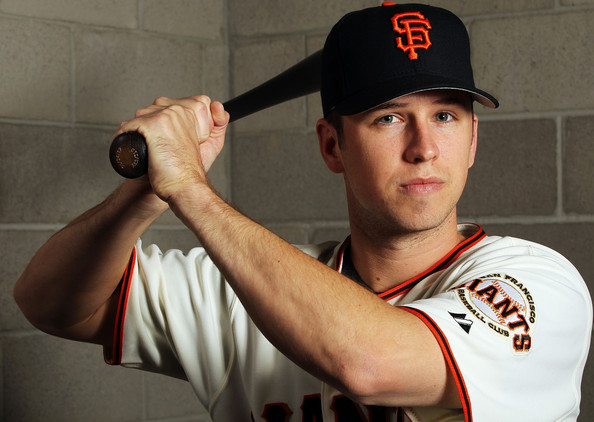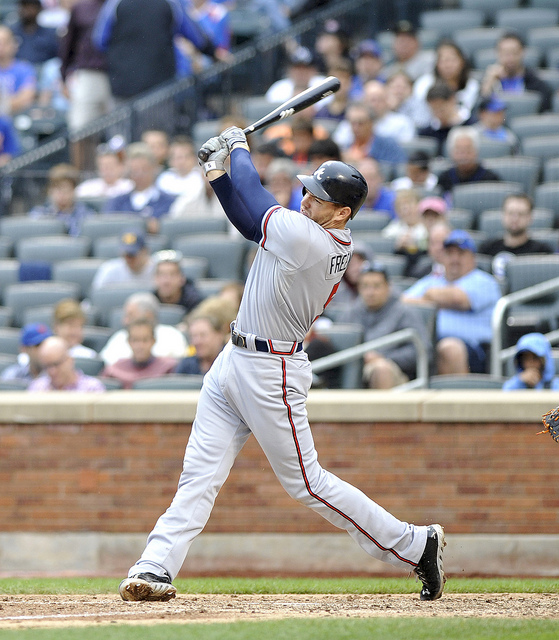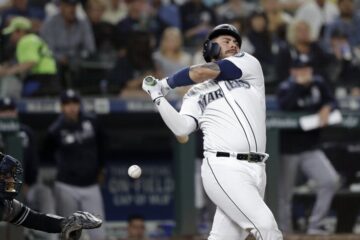2014 Total Run Index: Catchers

For those of you that saw the sneak peeks, this will be a bit of a review. Total Run Index is a statistical platform exclusive to TheFantasyFix.com. We took a look at the 2013 results, but did not forecast to 2014. This is what this series is all about. Of course, forecasting is a bit of a misnomer. Past performance is no guarantee for future results. It does allow us to have our best guess.
Total run index is a statistical platform that uses multiple sources to come up with one number. The number is measured in runs above or below average. TRI looks at hitting and base running separately and then combines it into one total. The beauty is that you can use to compare players across positions. Of course, we are getting ahead of ourselves. First, let’s look at the three and five year averages and then breakdown how we can use the information. Here are the three year averages:
[am4show have=’p9;p4;p7;p3;’ guest_error=’Front Office’ user_error=’Front Office’ ]
Three Year TRI Averages
|
Hitting |
Running |
Total |
|
| Buster Posey |
25.4 |
-2.1 |
23.3 |
| Mike Napoli |
21.8 |
-1.2 |
20.6 |
| Carlos Santana |
21.1 |
-2.4 |
18.7 |
| Joe Mauer |
18.7 |
-0.7 |
18.0 |
| Yadier Molina |
20.8 |
-3.7 |
17.1 |
| Carlos Ruiz |
10.1 |
-0.4 |
9.7 |
| Victor Martinez |
13.4 |
-4.1 |
9.3 |
| John Jaso |
7.5 |
0.1 |
7.6 |
| Alex Avila |
7.7 |
-1.5 |
6.2 |
| Jonathan Lucroy |
5.9 |
-1.9 |
4.0 |
| A.J. Ellis |
5.1 |
-1.2 |
3.9 |
| Salvador Perez |
5.0 |
-1.4 |
3.6 |
| Miguel Montero |
6.6 |
-3.2 |
3.4 |
| Ryan Doumit |
4.2 |
-0.8 |
3.4 |
| Wilson Ramos |
3.5 |
-0.6 |
2.9 |
| Jason Castro |
2.2 |
0.1 |
2.3 |
| Jarrod Saltalamacchia |
1.6 |
0.0 |
1.6 |
| Brian McCann |
4.4 |
-2.9 |
1.5 |
| Wilson Rosario |
1.4 |
-0.1 |
1.3 |
| Welington Castillo |
0.7 |
-0.3 |
0.4 |
The top of the list is not really a big surprise. Before we analyze the list itself we should take a look at how we use the list. Obviously, you can choose to put your faith in a three year average because it is more immediate or a five year list because it has more data involved. Personally, I choose to look at a case by case basis. In other words, which number appears to be more relevant.
Buster Posey appears at the top of this list, but he will finish further down on the five year list. On the other hand, Brian McCann finishes 18th here because of a down 2012 season. When you look in the face of his five year numbers you see that 2012 is more of an aberration. So, the five year TRI is going to be more relevant for him. You go with a case by case basis and come up the best results you can.
Five Year TRI Average
|
Hitting |
Running |
Total |
|
| Joe Mauer |
27.0 |
0.0 |
27.0 |
| Carlos Santana |
21.1 |
-2.4 |
18.7 |
| Mike Napoli |
17.6 |
-0.7 |
16.9 |
| Buster Posey |
18.1 |
-1.4 |
16.7 |
| Victor Martinez |
13.4 |
-4.1 |
9.3 |
| Carlos Ruiz |
9.3 |
-1.2 |
8.1 |
| Yadier Molina |
11.0 |
-3.5 |
7.5 |
| Brian McCann |
9.0 |
-2.9 |
6.1 |
| John Jaso |
4.7 |
0.1 |
4.8 |
| Jonathan Lucroy |
5.9 |
-1.9 |
4.0 |
| Salvador Perez |
5.0 |
-1.4 |
3.6 |
| Miguel Montero |
5.8 |
-2.4 |
3.4 |
| Wilson Ramos |
3.5 |
-0.6 |
2.9 |
| Alex Avila |
3.9 |
-1.4 |
2.5 |
| Jason Castro |
2.2 |
0.1 |
2.3 |
| A.J. Ellis |
2.7 |
-1.0 |
1.7 |
| Wilin Rosario |
1.4 |
-0.1 |
1.3 |
| Weilington Castillo |
0.7 |
-0.3 |
0.4 |
| Ryan Doumit |
1.0 |
-1.9 |
-0.9 |
| Jarrod Saltalamacchia |
-1.9 |
-0.2 |
-2.1 |
For those of you wanting to know which strategies to use, first we should use our case by case method and come up with a top twenty ranking that fits. Again, we are looking at which number makes more sense. After that, we can discuss strategy.
Catcher Top Twenty
- Buster Posey: 23.3
- Mike Napoli: 20.6
- Carlos Santana: 18.7
- Joe Mauer: 18.0
- Yadier Molina: 17.1
- Carlos Ruiz: 9.7
- Victor Martinez: 9.3
- Brian McCann: 6.1
- John Jaso: 4.8
- Jonathan Lucroy: 4.0
- A.J. Ellis: 3.9
- Salvador Perez: 3.6
- Miguel Montero: 3.4
- Ryan Doumit: 3.4
- Wilson Ramos: 2.9
- Alex Avila: 2.5
- Jason Castro: 2.3
- Jarrod Saltalamacchia: 1.6
- Wilin Rosario: 1.3
- Welington Castillo: 0.4
Possible Strategies
There are really two acceptable strategies to use when you are looking at TRI data. You can easily use the simple TRI rankings and build an acceptable roster. TRI was really built for people short on time. The run values make it easy to just list players from number one through 250 or 300 and call it a day. Personally though, I would consider going another direction.
There are about five runs difference between the 8th best and 19th best catchers on the list. There is 11 runs difference between the 5th best catcher and 8th best catcher. That is a sizeable gap if I have ever seen one. My strategy on draft day is to play to those gaps. Unfortunately, this makes the draft a lot harder to navigate because every draft is different. Every draft sees a run on certain positions at certain times.
You can play the gaps differently. Knowing that the position falls off after the top five could force you to take one of those top five guys or it could force you to wait and pick someone much lower down knowing the value is not that different between number six and number sixteen.
Who’s Missing
One of the more popular features of this particular series is likely to see which prominent players did not make the final twenty and why. Instead of ignoring it and hoping it will go away we should meet it head on. When introducing a new metric, it is always a good idea to take on unusual results to see if there is a problem with the methodology.
Matt Wieters (-1.2, -4.0)– He was actually one of the final cuts from the top twenty. His three year average came in at -1.2, so there isn’t a big difference between Wieters and Castillo. In terms of counting numbers he is superior, but Castillo is young and developing. The problem with Wieters is a low OBP and with more and more leagues including an OBP (or walks) you have to take that into consideration. A number of fantasy players will take Wieters relatively early because of his 20+ home run power, but power is something that is fairly easy to come by.
Russell Martin (-0.8, -3.0)– I like Russell Martin and might be tempted to ignore the results near the end of the draft on him. 2013 was a lot kinder to him than 2011 and 2012. What is more troubling is that he was even worse in 2009 and 2010. So, when you look at the data from a comfortable difference you begin to see 2013 as the aberration.
A.J. Pierzynski (-1.9, -7.5) – This is really not much of a surprise when look at the five year data. 2012 was clearly a career year for him and the further we get removed from that the more it sticks out like a sore thumb. Still, he was reasonably productive in 2013, so he might be a good waiver claim down the line, but there is no need to put him on your draft board.
[/am4show]




